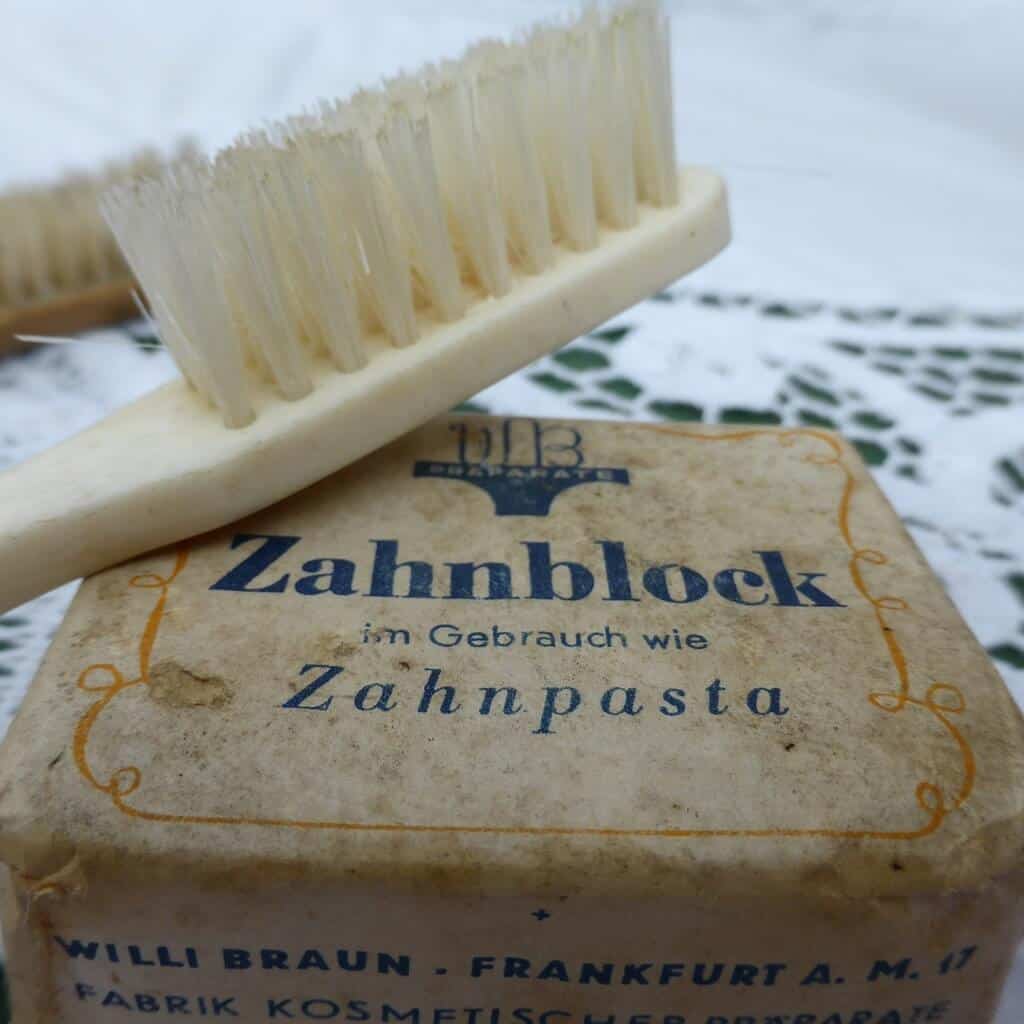Even though dental technology is improving, tooth decay has been a real pain in the neck for thousands of years. If you dread going to the dentist, you can only imagine how our ancestors must have felt. They had their own methods of fighting against this annoying and painful condition. Archeologists discovered drilled teeth in sites dating back to 14000 years ago (1). Throughout history, humans found different ways to treat cavities. But as the proverb goes: “An ounce of prevention is worth a pound of cure”.
Contents
- 1 Causes of Tooth Decay
- 2 Reverse And Protect Against Tooth Decay
- 2.1 Brush your teeth regularly and use floss
- 2.2 Eat foods packed with minerals crucial to your teeth
- 2.3 Have an optimal level of fat-soluble vitamins A, D, E and K
- 2.4 Avoid highly processed food rich in simple carbohydrates
- 2.5 Avoid Phytic Acid
- 2.6 Avoid sugar
- 2.7 Try oil pulling
- 2.8 Chew sugar-free gums
- 2.9 Use Remineralizing toothpaste
Causes of Tooth Decay
First, we need to know what causes tooth decay in order to act promptly and prevent it from worsening and ruining our teeth. Dental caries are caused by biofilm (dental plaque), which consists of different types of bacteria. Some of these bacteria produce acid when fermentable carbohydrates (fructose, glucose and sucrose) are present. The most common bacteria include Streptococcus mutans, Streptococcus sobrinus, and lactobacilli. However, these bacteria alone don’t cause much harm just by existing. There is a fine balance between two chemical processes: demineralization and remineralization.
During the process of demineralization, minerals are removed from the (a) tooth enamel, (b) dentin and (c) the cementum. This makes a tooth susceptible to cavities. Remineralization is a reverse process, in which the minerals are restored. When your teeth lose minerals faster than receiving new ones, the balance is disrupted.
Some of the external factor responsible for this imbalance include:
- Poor Oral Hygiene
- Sugary diet
- Acidic foods and drinks
- Not getting enough natural fluoride
- Having a dry mouth
- Diabetes
- Smoking
- Genetics
Some of these factors can be easily avoided. When cavities are deep and painful, it would be best to pay a visit to your dentist. However, if you want to prevent cavities or remineralize the affected tooth in the early phase of carious lesions, you can turn to Mother Nature and find a way to heal cavities naturally. If you follow these tips you can expect to have a pearly white smile:
Reverse And Protect Against Tooth Decay
Brush your teeth regularly and use floss
It is advisable to brush your teeth at least twice a day, 30 minutes after eating or drinking. Pay attention to use the proper technique and avoid hard toothbrushes, as they could damage your gums. Instead, opt for the ones with medium to soft bristles. If you have sensitive gums, you should use toothpaste for sensitive teeth. This can reduce inflammation and potential infection. Flossing is very important as well. Because when you floss you remove all the tiny food particles stuck between your teeth.
Eat foods packed with minerals crucial to your teeth
Your teeth need calcium, magnesium, and phosphorus to be strong and healthy. If you lack any of these minerals, you should try eating more foods which contain them. For the optimal Calcium level consume free-range milk, sardines, almonds, kale and broccoli. Protein-rich foods, such as meat, beans and whole grains are a good source of Phosphorus. While Magnesium-rich foods include spinach, banana, nuts, dark chocolate (cocoa powder) and legumes.
Have an optimal level of fat-soluble vitamins A, D, E and K
Fat-soluble vitamins help prevent tooth decay, through facilitating the absorption of the above-mentioned minerals.
- Foods rich in vitamin A are sweet potatoes, carrots, beef liver, fish, milk and eggs.
- For a healthy level of vitamin D spend some time in the sunlight or eat fatty fishes (salmon and mackerel), and drink fortified milk.
- Vitamin E is found in avocado, spinach and almonds.
- Your best sources of vitamin K are green, leafy vegetables such as kale.
Avoid highly processed food rich in simple carbohydrates
The bacteria in our mouth feed on foods rich in carbohydrates. That’s why you should minimize the exposure of your teeth to foods such as white bread, cakes, soda, french fries and sweets. Constant snacking is more detrimental than one short exposure (during a regular meal, for example). Instead, you should opt for complex carbohydrates such as fruits, vegetables, and nuts.
Avoid Phytic Acid
Phytic Acid is an enzyme inhibitor found in legumes, seeds and whole grains. If you consume too much food rich in phytic acid you can be at risk for mineral deficiencies and osteoporosis (phosphorus from grains and beans attaches itself to phytic acid and becomes unabsorbable). This acid is also bad because it inhibits the absorption of minerals which are good for your teeth (iron, magnesium, calcium). But, don’t despair! There are several ways to reduce the amount of phytic acid when you prepare legumes or grains. You can either soak them for a minimum of 12 hours (this will remove as much as 60% of phytic acid) or ferment them (this work well for soybeans).
Avoid sugar
It is well known that sugar is detrimental to your teeth. The plaque bacteria feed on sugary food and use it to produce the acid which is responsible for demineralization of your teeth. You should reduce the amount of sugar in your diet (watch out for the sugary drinks, too!), or in the best-case scenario eliminate it almost completely. You can replace sugar with stevia extract.
Try oil pulling
This technique has been used for thousands of years in Ayurvedic medicine to help get rid of mouth bacteria and plaque. Swish one tablespoon of coconut, sunflower or sesame oil for about 20 minutes and then spit it out. Moreover, studies have found that oil pulling is a great method for treating gingivitis since it helps get rid of harmful microorganisms.
Chew sugar-free gums
You could chew sugar-free gum after snacking. This promotes the flow of saliva, which reduces acids in the mouth. However, the negative is that sugar-free gum contains artificial sweeteners. This includes sorbitol, aspartame and mannitol, which may pose serious health risks, even if they don’t cause cavities. Xylitol chewing gum may be a great alternative, as xylitol has a history of dental use (2). However, chewing gums will never be a complete replacement for good old brushing and flossing.
Use Remineralizing toothpaste
Remineralizing toothpaste can be used to restore and strengthen enamel. Valuable teeth-protecting minerals are added to promote remineralization. You can either buy this toothpaste in health shops or make it at home with ingredients such as: Coconut oil, calcium powder, xylitol, magnesium powder and essential oil.

Now you know that there are many ways to heal cavities naturally. Turn your bad habits into good ones and you will have a brilliant smile in no time.
What is your experience with reversing cavities naturally? Have you had any success? Post your tips or questions in the comment section below.


I like that you pointed out that you should get some vitamin E in your diet if you want to protect your teeth. It is good to know that you can get it in avocados, spinach, and almonds. It might be smart to get a dentists suggestion on what type of vitamins you should eat.
Yes, with a healthy diet, you should have a healthy body. Thanks for the comment!
Prevention is better than cure. Thanks for sharing your article on reverse tooth decay naturally.
We took our son to the dentist the other day and they said he has a few cavities that need to be filled. It’s good to know that the amount of sugar that he is eating probably has something to do with that. I’ll keep your article in mind as we make a plan to prevent cavities from forming in the future.